Call Us: +1 315 998 1998
Both in the bustling metropolis and the more peaceful rural regions, you can find gardens of varied sizes and types all around Japan. They are a fantastic illustration of the Japanese aesthetic, which values nature, art, and architecture. If you're planning a trip to Japan, consulting a Japan travel guide will help you discover the best gardens and explore the rich cultural heritage they represent. You may make a vacation from seeing different gardens, or you can squeeze a garden visit into a more extensive cross-country journey. I've seen a lot of beautiful gardens, but the ones below are exceptional.
rn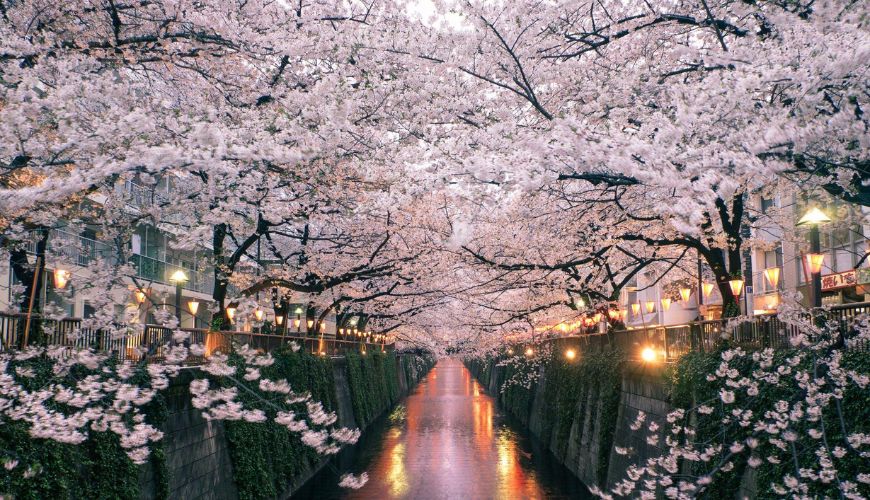 Meguro River, reflecting cherry blossoms
Meguro River, reflecting cherry blossoms
Japanese people use parks for recreational purposes, such as picnics and taking their children to play. They have a far more aesthetic connection with gardens, seeing them with the same quiet awe as in an art museum.
rnThe Imperial Palace East Gardens are a great place to begin your exploration of Tokyo. The palace grounds, which served as the principal home of the Japanese Emperor, are accessible to the public year-round. The modern city of Tokyo has developed around the palace, making it easily accessible to those staying in the city's core. Maple trees surround a pond, a beautiful teahouse, and a forest that opens into expansive grounds.
rn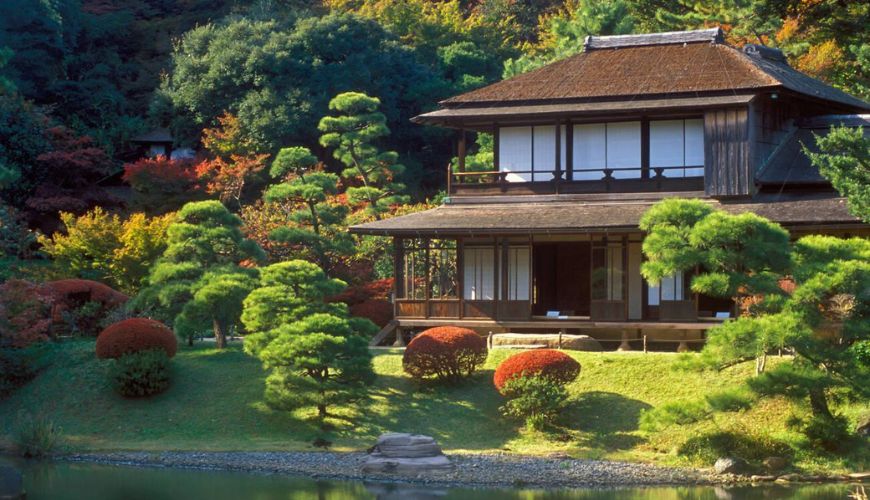 Sankeien Garden
Sankeien Garden
Space, isolation, artifice, antiquity, rivers, and panoramas are six features that many Japanese gardens aim to include. If you're looking for some space and quiet away from the hustle and bustle of Tokyo, take a day trip to Sankeien Garden near Yokohama.
rnThe wealthy silk manufacturer Sankei Hara constructed Sankeien in 1904. Despite its youth compared to other gardens, it has already gathered a collection of buildings the Japanese government has recognized as having significant cultural significance. Around a series of ponds and lawns is a collection of old buildings from all across Japan, many spared from destruction or ruin.
rnIt is an unbelievable scene with artificial hills, running water, and a classic teahouse. A three-story pagoda built in Kyoto in the 15th century and relocated here in 1914 dominates the grounds. The pagoda wasn't immediately apparent to me upon entering the garden; instead, it became increasingly visible as I explored the many trails. After spending the morning at Sankeien, I headed to Yokohama for lunch. A port city with red-brick structures inspired by merchants houses the biggest Chinatown outside China.
rn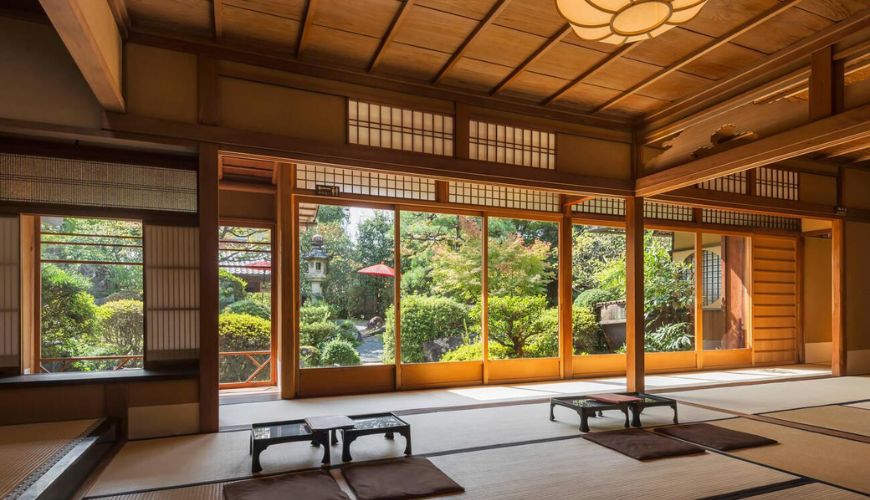 House and Garden in Kyoto's Traditional Style
House and Garden in Kyoto's Traditional Style
With its 1,600 Buddhist temples, hundreds of Shinto shrines, and several impressive Imperial residences, Kyoto is the Japan of historical films and ukiyo-e paintings.
rnThe tatami mat floors, sliding shoji screens, and exposed wooden beams give the space a genuine Japanese feel. Tsubo niwa (open courtyard garden) houses have rooms arranged around a tiny, plain garden enclosed by the house's walls. It's important to remember that these gardens are often inaccessible since their intended purpose is for interior viewing pleasure.
rn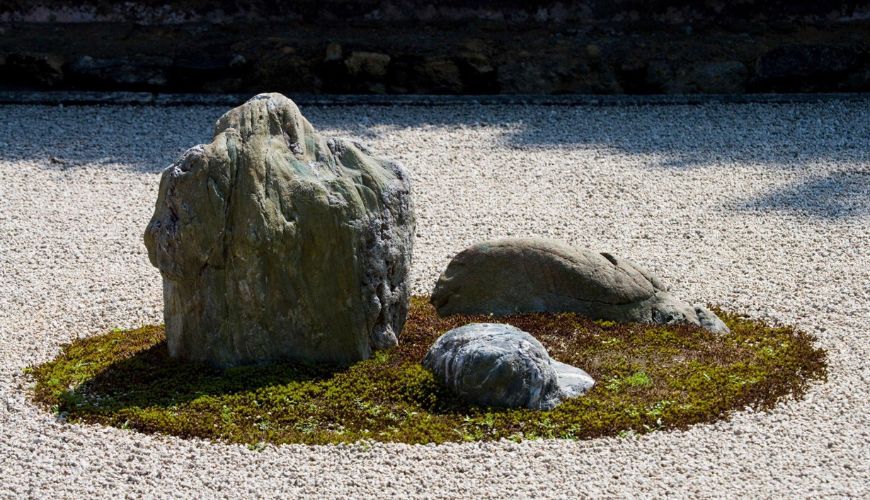 Ryoanji Zen garden, Kyoto
Ryoanji Zen garden, Kyoto
Because of its many religious institutions, Kyoto is home to many Zen gardens. The designers created these gardens to mimic the essence of nature and serve as a place for monks to concentrate on a particular minimalist aesthetic. Sand and rock predominate rather than plant life.
rnMany people consider Ryoanji's Zen garden the best in Japan despite it not being the largest. Fifteen pebbles may seem lost in a sea of sand and gravel, but don't let that mislead you. The purpose of Ryoanji is to encourage contemplation and engagement with the environment as you stroll through it. I tried standing at several places to see if I could get a better view of all the rocks, but I needed help.
rnHosokawa Katsumoto, a top-ranking warlord in the Ashikaga Shogunate, converted the adjacent area into a temple around 1450. However, people have yet to learn who constructed the garden or why they arranged the rocks the way they did.
rnThe garden is a half-hour bus journey to the north of Kyoto Station, and seeing it in its intended quietness first thing in the morning is highly recommended.
rn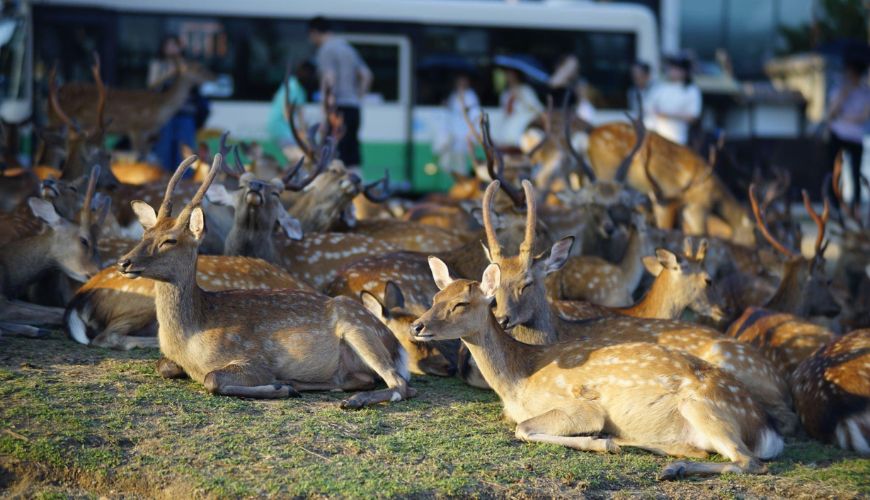 Semi-wild deer, Nara
Semi-wild deer, Nara
I wanted to escape the crowds in many of Kyoto's temple grounds, so I went to Joruri-ji. The journey from Kyoto to Nara by rail and bus takes around an hour and a half. The closest establishments to the temple are several eateries. I was the sole guest unless you included the cats who came to steal from the koi carp.
rnMany people regard the temple, which dates back to 1047, as one of the finest examples of a paradise garden. These landscapes are an idea from Pure Land Buddhism, a school of thought within the Buddhist faith that gained popularity in the eleventh century. The garden of paradise often has a pond, which stands in for the ocean between birth and death, and an island, which symbolizes Earth.
rnOnly at Joruri-ji can you find all nine sculptures of the Amida Buddha (the nine stages of nirvana) in its hondo (temple hall), making it one of the few surviving paradise gardens. It was one of the quieter gardens I've been to, so I could take in the peaceful surroundings despite its relatively modest size. The lake consumes most of the garden, although you may stroll around the periphery under the shelter of a three-tiered pagoda.
rn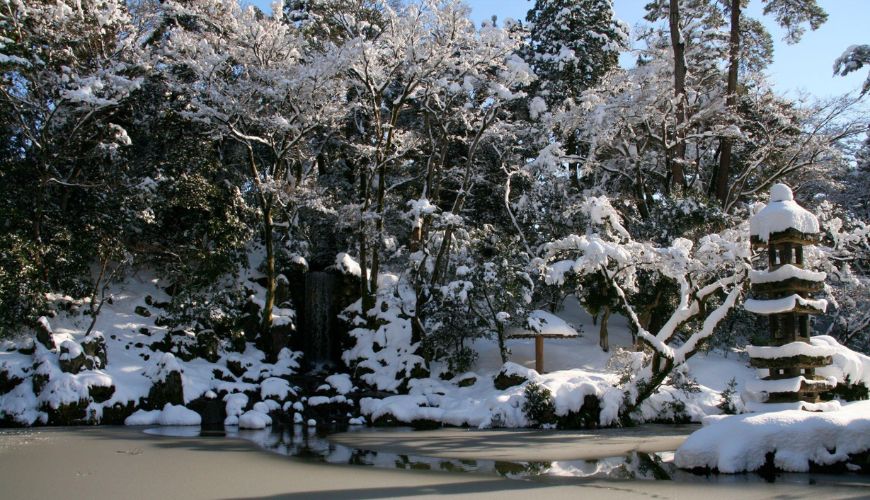 Kenrokuen Garden, Kanazawa
Kenrokuen Garden, Kanazawa
Kanazawa, a contemporary city renowned mostly for Kenrokuen Garden, is conveniently located between Tokyo and Kyoto. Kenrokuen is one of the three best gardens in Japan, along with Kairaku-en in Mito and Koraku-en in Okayama. It has the six essential qualities a garden must have to be flawless.
rnThe city is relatively small, so guests of most hotels can stroll to the garden. To escape the crowds, make the trip in the wee hours of the morning or late in the day. A guide accompanied me on an excursion and provided information about everything from the inspiration for the garden's design to why they placed lamps along the pathways.
rnOne of the first things I observed after emerging from the woods was a pond with a boldly gushing fountain in its center. The more significant elevation of the water source creates a natural pressure that causes the water to shoot upward, making this the oldest fountain in Japan.
rnI climbed a short, easy slope to get the ideal vantage point for photographing the garden: a huge pond with a teahouse perched on its corner. The Ryhaku Mountains may be seen in the distance if you turn around.
rnIt is possible to wander around Kenrokuen. Miegakure, or the skill of directing one's audience toward a particular point of view, informed the design of every facet of this structure. There is a well-defined trail that loops clockwise around the park.
rnThe Shigure-tei Teahouse, located in a former villa, is one of many teahouses in Kenrokuen. Traditional wagashi sweets from sweetened bean paste perfectly complement a cup of matcha (a finely powdered green tea).
rnThe Maeda clan, who controlled Kanazawa Castle in the 17th century, established the garden there. After years of renovations, this wealthy family of feudal lords finally opened their garden to the public in 1874. Several fires throughout the years destroyed most of the castle, but what remains may be seen at Kanazawa Castle Park, across from Kenrokuen.
rn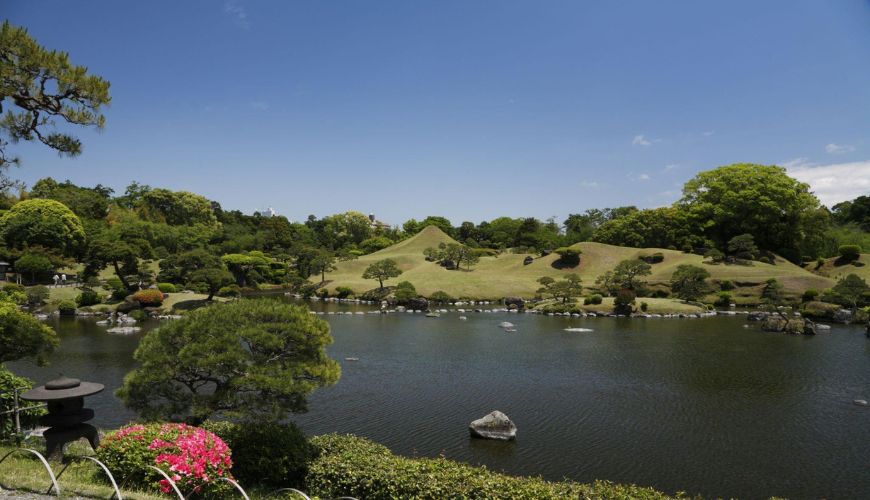 Suizenji Jojuen Garden, Kumamoto
Suizenji Jojuen Garden, Kumamoto
Gardens of the Chinese imperial palaces inspired Japanese merchants throughout the Asuka period (538-710). The earliest gardens in Japan utilized Chinese architectural principles to convey Buddhist ideals via respect for nature. Few gardens from this period survive now, although many contemporary designs reflect Buddhist ideals.
rnOver time, the gardens' religious importance waned, and they began to include tiny versions of famous Japanese landmarks and literary-themed settings, such as Mount Fuji at the Suizenji Jojuen Garden in Kumamoto. During the Kamakura era (1185–1336), when Buddhism was again influential, Zen gardens were developed as a peaceful place for reflection and meditation.
rnEach era's culture left its mark on garden design as time progressed. The aristocracy of the Edo era (1603-1868), whose complex social system fostered sponsorship of the arts, popularized walking around some of the best-known gardens.
rnPeople appreciate the many varied characteristics of Japanese gardens throughout the four distinct seasons. Although the Spring's cherry blossom has come to represent the arrival of spring, it is far from the only flower to do so.
rnMany gardens in the country organize events throughout the summer when the weather is nice and frequently decorate with lights for the occasion. However, many gardens, lakes, streams, and ponds stage their light display thanks to the flitting of fireflies, even if your vacation doesn't coincide with an event.
rnIn the autumn, the maple trees light up the gardens with their vibrant red and orange foliage. If you come by in the late fall or early winter, you may see skilled craftspeople build yukitsuri. These sculptural creations, made of rope and bamboo, are called "snow suspenders" because they are used to keep winter's heavy snow off of tree limbs.
rnYou can go between November and December. Architectural elements, including bridges, meticulously sculpted canals, and tea houses, truly stand out as you stroll around the gardens sipping hot tea. Someone created these gardens.
rn
Start thinking about your experience. These itineraries are simply suggestions for how you could enjoy some of the same experiences as our specialists. They’re just for inspiration, because your trip will be created around your particular tastes.
Start thinking about your experience. These itineraries are simply suggestions for how you could enjoy some of the same experiences as our specialists. They’re just for inspiration, because your trip will be created around your particular tastes.
Tell us about your plans and one of our specialists will plan a unique trip for you…
Can’t get any ideas for you next trip? Let TripAdvisor help you!
Find something else special